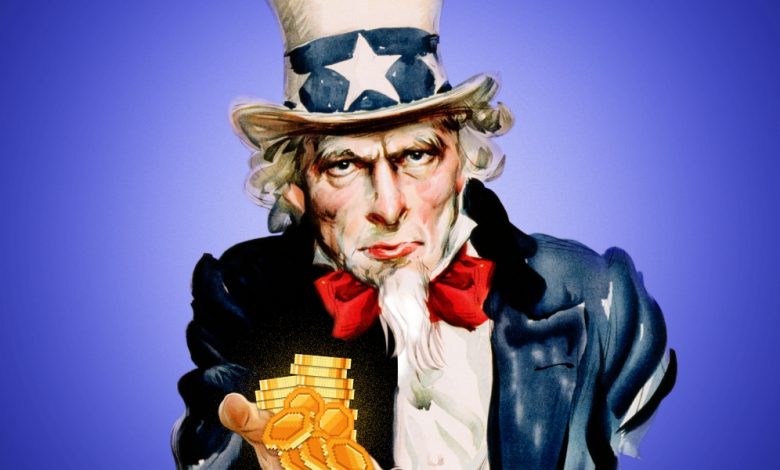How Stablecoin Acceptance Would Strengthen US Statecraft

Last week, the SEC sent shockwaves through the crypto industry when news leaked that it accused Paxos of issuing an unregistered security in its BUSD stablecoin — a claim the company “categorically denies.” The Securities and Exchange Commission has not provided any explanation as to how BUSD, which Paxos claims is fully hedged and fully redeemable, could constitute a security. Nor has she provided any guidance to other stablecoin providers.
Stablecoins – cryptocurrencies pegged to the value of the US dollar – are among the most disruptive technologies to emerge from digital finance over the past decade. But the SEC is on a warpath against them. With rumors that the federal government could now regulate stablecoins as securities, PayPal — the world’s largest online payment processor — recently put development of its own stablecoins on hold.
By taking a no-nonsense approach to stablecoin regulation, the SEC is flirting with a dangerous precedent that could impede not only legitimate innovation, but global adoption of the dollar.
That’s because stablecoins, if properly regulated, have the potential to solidify US financial hegemony for a generation. How? By charging dollarization.
Last summer, International Monetary Fund economist Eswar Prasad made a bold prediction: “It is possible that the national currencies issued by their central banks… could be replaced by stablecoins.” This is already happening in real time. In inflation-stricken countries like Zimbabwe, Turkey and Argentina, citizens can either watch their paychecks melt away or take refuge by converting their native currencies into dollar-backed stablecoins. It’s no surprise that many choose the latter.
Consider Latin America as a case study: the region is constantly struggling with currency devaluation, with an inflation rate of 14.6% last year – one of the highest in the world. Unsurprisingly, the region also boasts the highest adoption rate for stablecoins. According to a study by Mastercard, more than a third of Latin Americans have made a purchase with private stablecoins. And in Venezuela alone, stablecoins account for 34% of all small retail transactions.
In an unexpected twist, stablecoins act as a hedge against inflation that bitcoin should be. If stablecoin adoption proceeds at a brisk pace, it could be a trillion-dollar industry by the end of the decade. In the ultimate crypto coup, Uncle Sam could replace Satoshi as king of digital currency.
Stablecoins have brought millions of new participants to the dollar economy. But SEC regulations could bar them again. If the agency classifies stablecoins as securities, it will present a huge hurdle to global adoption at a critical time for US dollar hegemony.
Keep in mind that the SEC crackdown on stablecoins comes at a time when a smaller percentage of global energy transactions are in dollars and the digital yuan is on the rise.
Over the past year, Xi Jinping has increasingly pressured oil-rich leaders to sign oil deals in yuan instead of dollars, and many of them are bowing the knee. While the yuan is years away from toppling the petrodollar, it is clearly in search of the crown. U.S. policymakers should keep China’s global ambitions firmly in mind – and they should recognize that the country already has a competitive edge over the U.S. in terms of digital currency, as it launches its own CBDC – dubbed e-CNY – in 2021 has.
Can the US make up lost ground by launching its own central bank digital currency? Even if it could, it shouldn’t. An American CBDC would be a massive invasion of privacy and concentrate unprecedented power in the hands of central bankers.
So what are we left with in our competition against the digital yuan? stablecoins.
All the more reason for the SEC to get stablecoin regulation right.
The agency needs to see stablecoins for what they really are — not a nuisance to deal with, but tools to project American economic power. With the organic growth of stablecoins globally, we have the biggest opportunity for US dollar expansion since Bretton Woods.
If technology is the new oil, then let well-regulated stablecoins replace the dollar in energy transactions and become the de facto currency of the internet. Stablecoins could act as a gateway into the dollar economy for billions around the world, ushering in a new era of US financial dominance. We would be stupid to pass up this opportunity.
But we may be fools. Despite rising tensions between the US and China, the SEC has yet to grasp the bigger picture. If the agency regulates stablecoins as securities, it could undo the very innovation that could ensure U.S. dollar dominance for the next decade.
The current geopolitical situation calls for a more holistic approach to stablecoin regulation – one that seeks answers to the following questions: How can we use stablecoins as tools of statecraft? How can we regulate them in a way that protects consumers but also encourages dollarization? And how can we promote the adoption of stablecoins abroad to balance the digital yuan?
Stablecoins are not a problem – they are an opportunity. And with the right regulation, we can seize this opportunity to empower consumers, expand American hard power, and fly our flag in the burgeoning digital economy.
Sam Lyman works at the intersection of politics and innovation. He is the MPP nominee at Princeton, former Chief Speechwriter to Senator Orrin G. Hatch, and former Presidential Speechwriter and CEO of the US Chamber of Commerce. The opinions expressed in Fortune.com comments are solely the views of their authors and do not necessarily reflect the opinions and beliefs of wealth.
Learn how to navigate and build trust in your organization with The Trust Factor, a weekly newsletter exploring what leaders need to succeed. Login here.



